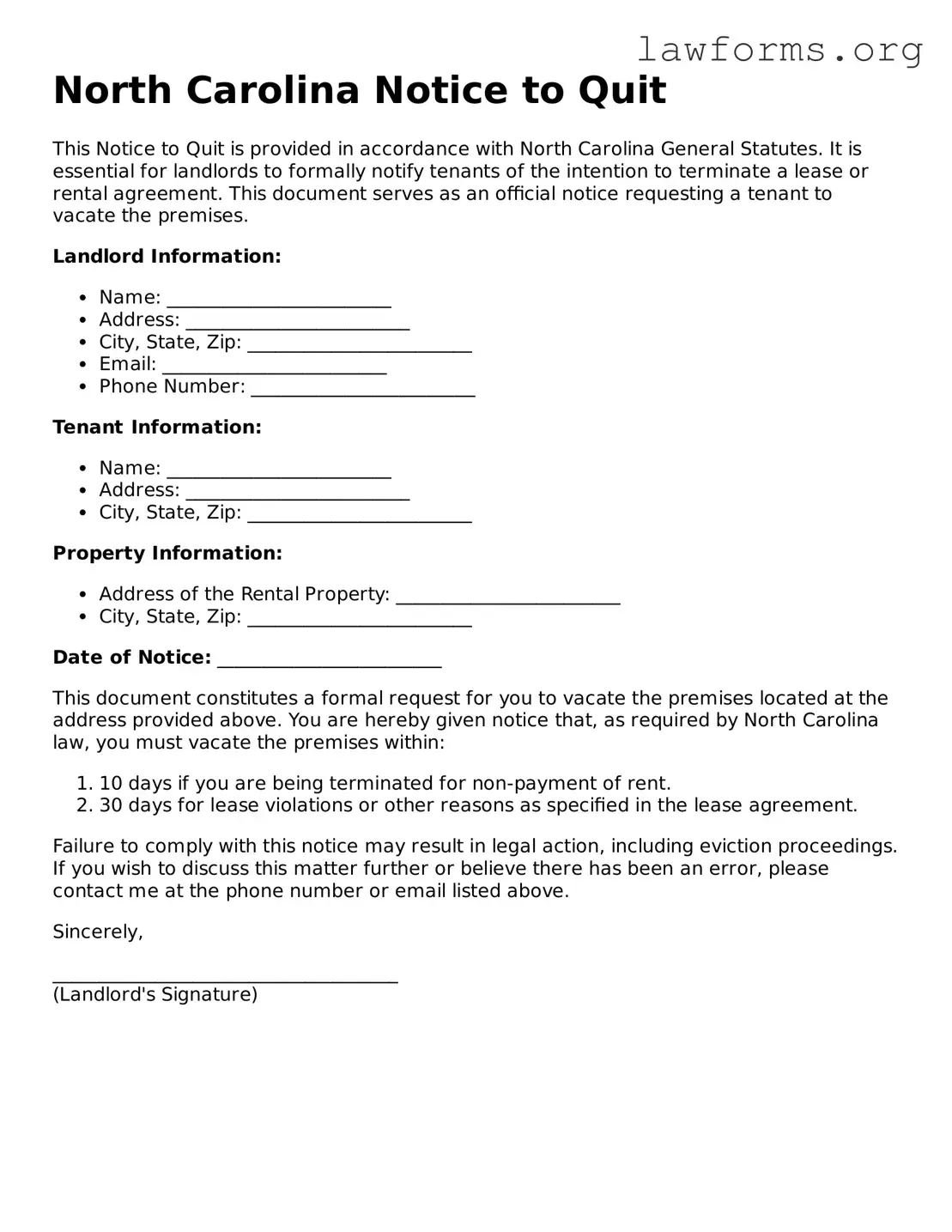North Carolina Notice to Quit
This Notice to Quit is provided in accordance with North Carolina General Statutes. It is essential for landlords to formally notify tenants of the intention to terminate a lease or rental agreement. This document serves as an official notice requesting a tenant to vacate the premises.
Landlord Information:
- Name: ________________________
- Address: ________________________
- City, State, Zip: ________________________
- Email: ________________________
- Phone Number: ________________________
Tenant Information:
- Name: ________________________
- Address: ________________________
- City, State, Zip: ________________________
Property Information:
- Address of the Rental Property: ________________________
- City, State, Zip: ________________________
Date of Notice: ________________________
This document constitutes a formal request for you to vacate the premises located at the address provided above. You are hereby given notice that, as required by North Carolina law, you must vacate the premises within:
- 10 days if you are being terminated for non-payment of rent.
- 30 days for lease violations or other reasons as specified in the lease agreement.
Failure to comply with this notice may result in legal action, including eviction proceedings. If you wish to discuss this matter further or believe there has been an error, please contact me at the phone number or email listed above.
Sincerely,
_____________________________________
(Landlord's Signature)
